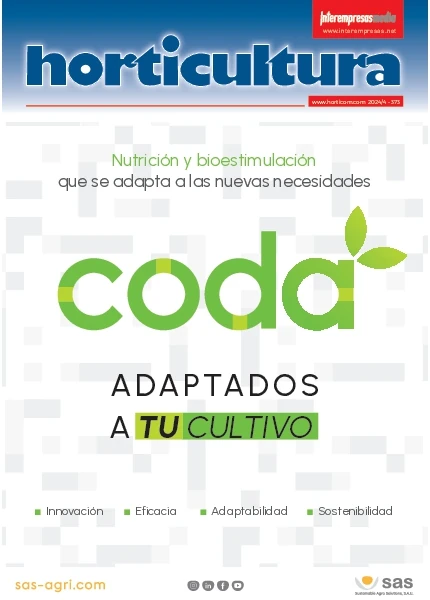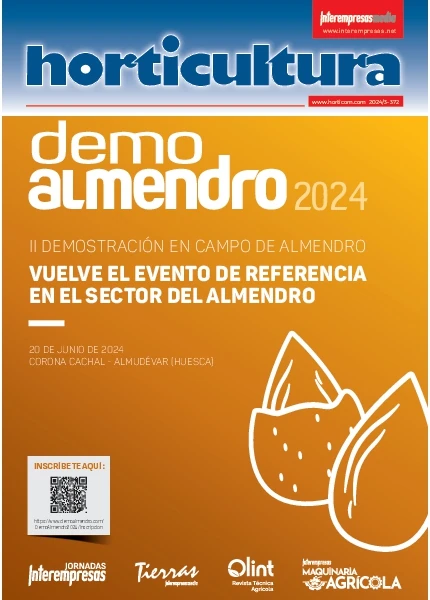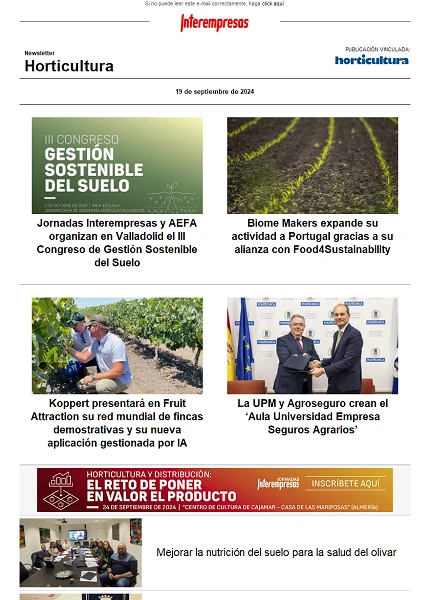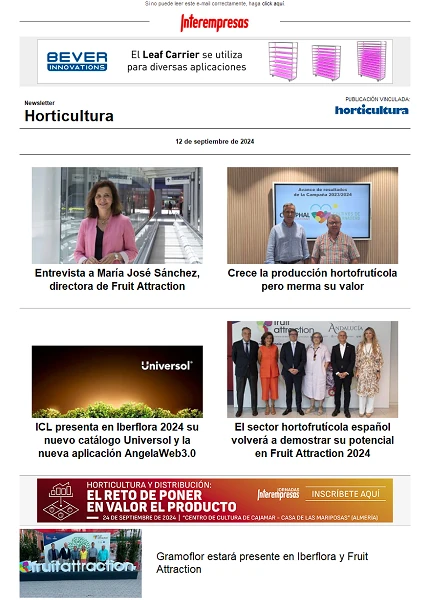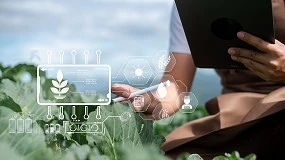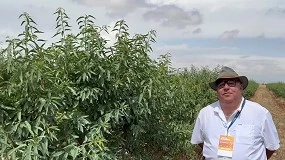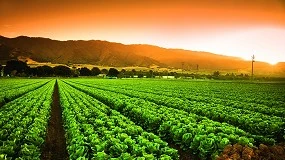Conclusions of the I Symposium National of Horticultural Engineering
Antonio Ruiz Channels, José Miguel Molina Martínez and Manuel Ferrández-Villena
15/04/2014Of the 20 to 22 February took place in Orihuela (Alicante) the I Symposium National of Horticultural Engineering. Almost a hundred of assistants could know at first hand the last novelties of the agromótica applied to the horticultural world, in a meeting headed to all the agents involved in the technological advances of the sector agroalimentario. We present here the conclusions of said Symposium, divided in each one of his areas of work.
Automation and control for the management of resources hídricos in horticulture
2. The application of automation and the telecontrol to a network of experimental drainage is another of the cases of quoted study. By means of readings of caudalímetros and raingauges of pulses and his transmission to a compact controller and his register in Internet, is possible the management of the data in real time.
3. This same control in real time is applicable to the management of data of stations agrometeorológicas. By means of a system of automation and telecontrol with filtered of data in real time, obtain data that fulfil with a series of rules established and does not be necessary to do a filtered back in office. This is applicable to the practical whole of stations agrometeorológicas that exist in operation and at present do not employ this methodology.
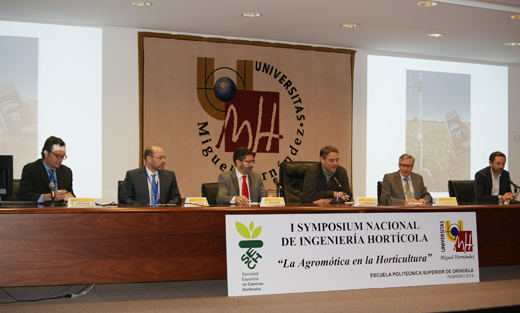
Of izq. To dcha: Antonio Ruiz, researcher of the University Miguel Hernández; José Miguel Molina, president of the Group of Horticultural Engineering of the SECH; Manuel Gallud, councillor of Environingingment of the City council of Orihuela; Juan José Ruiz, director of the Upper Polytechnical School of Orihuela (UMH); Jesús Pomar, chair of the Universitat of Lleida; and Ricardo Abbey, director of the Department of Engineering of the UMH.
4. The use of applications of intelligent telephones or smartphones is another of the lines of work for the management of the water in horticulture. It showed a case of study of an application developed in language iOS for the calculation of diameters of sides of irrigation located from different data of game (discharge and separation of emisores, type of emisor, among others). The advantage of this type of tools is that they realizar a lot of simultaneous calculations and complexes without need to employ a PC. The employment of applications for intelligent telephones shows like an increasing alternative for all type of applications agromóticas.
5. Another appearance that has exposed referred to the management of resources hídricos in horticulture is the employment of models of management for establishment of crops, efficient irrigation, saving of power, among others, taking into account environingingmental and economic criteria. This type of models employ different methodologies, between them the genetic algorithms. The use of these tools allows potential savings in addition to being able to implement his use in systems of automation and telecontrol like tools of decision. The models of management are a fundamental base for the development of new devices put that establish the guidelines of operation of the models agromóticos.
6. They exist applications of hardware and software of automation and telecontrol in horticulture that, in addition to experimental exploitations, employ increasingly in commercial exploitations. One of the cases of exposed study in the Symposium applies to the crop of the strawberry. The productive circumstances and of market of this crop require an irrigation of precision by means of pulses and avoid percolation. By means of some guidelines of handle, a system of irrigation with emisores autocompensantes antisucción and antidrenantes, regulatory valves of pressesure and probes of humidity of the floor is possible to control the irrigation inside some suitable parameters. It complements the system with a programmer of irrigation, climatic station and control of the fertilisation. An additional element is an application of automation and telecontrol with different types of support (PC, mobile, tablet) for the control by part of the user. This example shows how the agromótica is a tool of common use in the horticulture.
7. Another of the elements of the systems of automation and telecontrol are the wireless architectures for the management of the irrigation of a crop. By means of wireless nodes interconnected with GPRS and a software of control of different variables (floor, water and plant) manages in real time the irrigation of a crop. The data obtained manage and store in a server. An additional advantage is that the nodes feed by means of solar power. The wireless devices of communication employ with quite a lot of success in field although it has to advance in the research of systems more robust and that manage the data in the 'cloud'. The systems of wireless nodes present like a good way to manage in real time the irrigation. It includes in a case of study a network of wireless nodes with the hardware and software configurables.

9. The utilisation of models for the control of the processes of agricultural management form part also of the development of new devices in agromótica. The employment of models contrasted of growth of the root with regard to the vegetal coverage in Horticulture allows to implement them in the algorithms of management of the irrigation for his automation. By means of this type of models determines the depth of root with a suitable precision. It opens a line of work to obtain similar models in different horticultural species.
10. The employment of systems of automation and telecontrol also has extended widely in commercial exploitations of viticulture. By means of a system of sensors of humidity (watermark and TDR), a wireless network of sensors communicated between himself and with transmission of data in real time, is possible to determine the adjust of the coefficients of crop of different varieties vinícolas. This allows to handle the irrigation of a precise way and applying stress controlled to the varieties vinícolas to obtain the suitable qualities of harvest.
11. The virtual sensors based in technicians of identification of dynamic systems present like an alternative to the traditional sensors more sophisticated. From the data obtained can calibrate and validate virtual sensors that integrate in controllers of irrigation based in technicians advanced of control. The investigation in the field of the virtual sensors has quite a lot of possibilities of development because of the decrease of costs and rapidity of answer in front of the traditional sensors more sophisticated.
12. The employment of tools of hydraulics modelling of a network of irrigation also can implement in the systems of automation and telecontrol of the irrigation. By means of hydraulics models of networks presurizadas type Epanet can optimise the opening and closing of valves of an installation of irrigation in a field of golf. The employment of this type of tools in the automation and the telecontrol achieves potential savings in the consumption of water and power. It follows an analogous tendency to the expressesed in previous sections.

13. The sensors employed for the control of salinity CE allow to automate the irrigation in ornamental species. The study of new sensors is another of the lines of future works inside the automation and the telecontrol in agriculture.
14. The employment of tools for software PC also is one of the appearances related with the automation and the telecontrol for the management of resources in the agricultural installations. One of the computer packages presented in this Symposium is related with the optimum determination of the most adapted combination of fertilisers according to the optimum economic for fertirrigación from a series of available products. The final aim is to diminish the costs of acquisition of the product.
15. It has included a case of study of cooperative projects on irrigation. It splits of the results of several European projects to generate final products for the commercialisation. In the concrete case presented, the final product is a dynamic instrument and appeal to improve the programming of the irrigation based in previous experiences of several researchers and locations.
Automation and control for the management of energetic resources and environingingmental parameters in horticulture
2. The control of the energetic parameters in the installations of irrigation of fields of golf presents like another of the applications of these technologies. The pumps of the installations of irrigation of a field of golf need to elevate a big quantity of water to a high pressesure in some short spaces of time. By means of models of simulation and systems of performance is possible to do work to the station of pumping the most next to his optimum point of operation. This translates in economic savings. It showed a case of study in a field of golf by means of a model of simulation of the energetic demand by means of the software Matlab.
3. The systems of control advanced in the dryers of industrial tobacco employ inside the control of environingingmental parameters in horticulture. It showed a system of control with notable improvements with regard to the existent solutions (management of the cured and aprovechamiento and exploitation of the data monitored mainly). It employed a structure of architecture distributed, composed by a controller and a server, in addition to different devices customer for the interaction of the users, like portable computers, tablets or intelligent telephones. It has developed and tested in a frame of simulation and has validated later in a secadero real, where has checked the efficiency of the improvements presented (versatility in the configuration of the curves of cured by means of a visual and intuitive interface, storage of variables monitored in databases for his back query, possibility of taking decisions for the handle of the cured, between other).
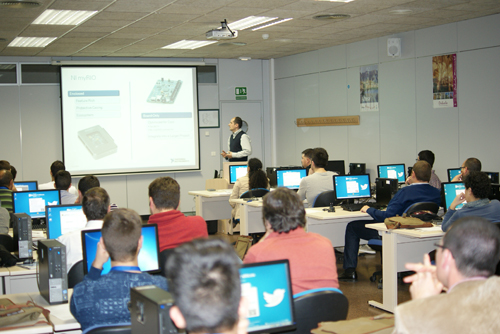
4. Following with the applications 'apps' for intelligent telephones or smartphones and tablets presented an application improved of a software for mobile (RaGPS) in version Android. By means of this device can calculate, store and transfer the parameters associated with the position and relative distance earth-sun: solar radiation alien, radiation incident in the earth with sky cleared, hours of sun, equivalent evaporation, among others. It has achieved an adaptative design of the elements in screen for his use in tablets, the appearance of the application is entirely renewed, using the current tendencies in mobile applications.
5. The architectures software also employ successfully for the control of climatic parameters in Horticulture. It shows his employment in the taking and filtered of data in real time for stations agroclimáticas and increase the speed of said processes. By means of the differentiation of tails for acquisition of data on the one hand and to process all the information and realizar the calculations by another, is possible to realizar the calculations properly and not losing data. The improvement of the procedures of calculation and taking of data allows to design devices more robust.
6. Inside the big range of indicators of the use of the water and the power in the installations of irrigation and because of the irruption of elements of automation and telecontrol in these installations propose new indicators to reflect the degree of automation of the quoted installations. These indicators improve the management of the installations of irrigation and allow to establish a comparative to show fortresses and weaknesses between distinct installations. They proposed a series of indicators in a case of study for different plots of irrigation in horticultural and others to scale of installations of community irrigation in communities of regantes. This methodology shows adapted but has to be contrasted with more cases of study.
7. The automation and telecontrol of the installations of renewable energies in the horticultural installations is another of the appearances treated in the Symposium. In this case it did a specific study of aerogeneradores applied to the agricultural sector. It showed a case of study of a computer application to combine data of meteorological stations and data of an aerogenerador to determine wind potential and power generated, among others. It treats of a tool that allows the optimisation of the management of this type of installations.
8. The employment of systems 'Scada' for the energetic control in industries agroalimentarias also included also in this event. It presented a software 'Scada' advanced for the control optimised of the power in installations of air conditioned and air conditioning, installations of air compressesed and lighting. The appearances that takes into account related with the power are the data referents to the construction and closing of the building, estimate of needs of ventilation in function of the personnel, generation of charts in function of the conditions of inner and external temperatures and solar radiation outside, calculation of the power generated from the curves of power of the compressesor or boiler depending on the installation, among others. His implantation would allow a potential saving of 30% of the energetic consumption. The final aim of the system is that an operario, from a point centralised of control, have proof of the possible deficiencies of the installation and his location to act in consequence.
9. An analogous use of the control of the lighting and the irrigation can apply in vertical gardens. The vertical gardening constitutes a new current inside the gardening, that presents like an alternative to the systems of ajardinamiento and traditional construction, and that basically consists in the design and construction of surfaces ladscaped in a vertical plane. It has tuned a system of register of environingingmental variables (temperature, humidity and radiation) for the automation and telecontrol of the system of pumping and able lighting to give service to a vertical garden. The team described is a recorder (datalogger) of temperature, humidity and radiation built from a Raspberry Pi, an Arduino One and a computer that by means of the suitable programming are able to take decisions to control the lighting, the frequency and dose of irrigation to apply in a vertical garden. The Raspberry Pi realizar functions of server web and the P.C. It incorporates a program 'Scada' of monitoring of variables, telecontrol and automation of the management of the vertical garden. Finally they show some results of the essays effected.
11. Another of the sensors and controllers presented for the control of the processes are the FPGA (Field Programmable Gate Array). It treats of devices programmable semiconductors based in matrices of logical block configurables. It presented an implementation in a FPGA and by means of description VHDL, of a system with a sensor SHT75 (integrated sensor of humidity and temperature calibrated) and a software of specific programming and has developed a prototype of software of control for PC of reading and register of the temperature and humidity.
12. Finally they presented two communications on the dimensionado of installations of heating and the problem of the condensation in greenhouses. These appearances go tied with the processes of automation and telecontrol since it results crucial that the installations are dimensionados properly for his correct operation. It presented a case of study in heating of an invernadero of pepper and a series of measures employed to avoid the phenomenon of the condensation.
Automation and control in machinery and robotic in horticulture
2. The intelligent containers are others of the applications in the automation in machinery and robotic. They characterise for being able to carry out intelligent functions such as trace the product, feel the surroundings inside and out of the container and communicate with the distinct agents of the alimentary chain (systems of control of warehouses, management of transport, linear, display units of retailers, etc). It presented a development of technology RFID (identification by radiofrecuencia, according to his acronyms in English), by means of which achieves the trazabilidad absolute of the foods. The main disadvantage of this technology is the cost of the label RFID or 'tag' (with antenna and microchip). They presented the results derived of the implementation of a system of labeling for intelligent containers, based in direct impressesion on cardboard, using inks conductivas on the same cardboard.
3. It presented in this section a project of pilot plant in a centre of investigation on this technology. The project of Pilot Plant of Robotics, Automatic and Artificial Vision of the CT Tecnova arises like answer to a continuous and increasing need of modernisation and of improvement of the competitiveness in the companies of the agro-industrial sector and hortofrutícola. The achievement of the project is the result of the research of some flexible installations and with capacity to give answer to the need of complex technological developments.
4. Related with the line of application to the agricultural machinery presented a controller for variators of frequency with control by modulation of width of pulses for agricultural applications. This method of control, although it does not possess the precision that would obtain doing use of an analog digital converter (DAC), is sufficiently require for this type of application in the agroindustria. The team developed, has used for the control of speed of two of the stravel of a line of reception of olives of a cooperative olivarera, forming part of a group of greater proportions for the management of the whole of this plant of reception. The process of automation and telecontrol final, does by a computer application SCADA implanted in a computer which allows of agreement to a system of prelaciones, act on each element of the line of reception managing also the possible failures been due to overload electrical, generating the corresponding alarm and the deactivation of all the elements involved.
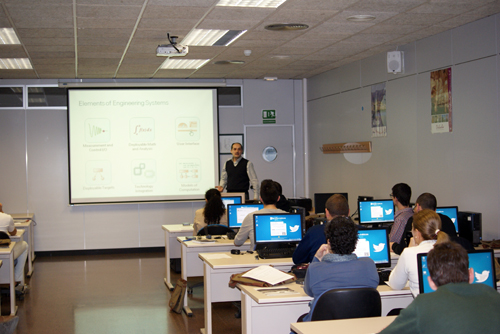
Artificial vision for the automatic control of processes agroalimentarios
1. One of the applications that presented in this section was the application of digital photography in vertical projection for the control and programming of the irrigation. By means of computer treatment can obtain parameters related with the development of the crop, linked to the calculation of his requests hídricos. The fraction of vegetal coverage, obtained applying technical of classification supervised to digital photographies of the vegetal cover, is a parameter of big utility in the determination of the needs hídricas of the crops according to the methodology proposed by the FAO-56, as it has been related directly with the coefficient of crop. It presented a case of study for the programming of the irrigation, basing in the balance hídrico of the floor, of a commercial crop of lettuce variety 'Little Gem'. The results obtained compared with the real management of the water of irrigation carried out in the plot of essay, monitored by means of probes of humidity of the floor, with the end to issue an analysis of the deficiencies found in said management and a quantification of the excess of water of irrigation contributed to the crop.
2. Another employment of the artificial vision is the analysis of colour in vegetal species for the management of crops and processes agroalimentarios. It is very known that the images can contribute information very valuable on the state of growth of the plants, the illnesses carenciales, the maduration of the frutales, the apparition of plagues and bad grasses, etc. The technicians based in analysis of colour are fundamental in this command, when allowing classify and characterise of precise form, robust and efficient the distinct regions of the images. Splitting of a very wide group and miscellaneous of images of plantations of lettuce (Lactuca sativa) –classified previously of manual form in zones of floor and zones of crop–, has carried out an exhaustive and systematic study of the optimum form of modelar the colour in problems of classification of plants. The results show the superiority of the models that separate luminance and crominancia. Especially, the space YCrCb offers the best resulted when descarta the channel And, with a percentage of tarpaulin in the classification of 98,7%; besides, these results are significantly better that the ones of the rest of the alternatives.
3. The use of the artificial vision to the determination of the measure of the growth of vegetal species showed in another of the communications of the Symposium. It showed the development of a system for the supervision of the growth of seaweeds filamentosas using analysis of image. To achieve the optimisation in the crop of the seaweeds has to know when have arrived to his point of maturity, to end to be able to recolectarlas and like this initiate another new cycle to establish a greater number of cycles in a period of time given and with this achieve a greater productivity. It did grow the seaweed Spirogyra in a plastic mesh and monitor his evolution by means of periodic images, adjusting the protocol of obtaining of these images to end of homogenizar the quality of the images before being analysed. The images were taken with distinct lightings, red, green and blue, analysed later the same component of colour that the tone of lighting. The system presents like an economic alternative to the supervision in real time of the process of crop of seaweeds filamentosas in intensive conditions.
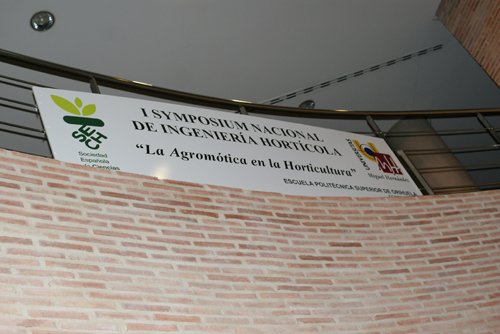
5. The technicians of artificial vision also employ in the detection of the pardeamiento enzymatic and the control of microorganisms. It studied the possibility to evaluate the pardeamiento enzymatic in apples (Malus domesticates) by means of the analysis of images. The analysis along the time of the coordinates Cielab of the pieces of apple obtained by means of the colorimeter and by means of analysis of image allowed to determine in both cases a similar evolution of the increase of colour along the time. This result shows the possibility to use the analysis of image for the evaluation of the pardeamiento enzymatic in apples.
6. The alternatives to the scanned laser are others of the applications of the artificial vision in the sector frutícola. By means of these technicians can achieve a three-dimensional reconstruction with some quality and with an inferior economic cost. They presented two alternatives for the three-dimensional reconstruction of the surface of distinct pieces of fruit. Basing in the foundations of the vision estereoscópica traces a flow of work that allows, from photographic images taken from distinct positions, obtain the three-dimensional representation of the fruit. For this analyse and compare the methods of reconstruction by means of the applications Patch Multi-View Stereo (PMVS) and Microsoft Photosynth, that allow to take in consideration the geometrical and photometric information of the fruit in study, what allows to realizar a representation of the characteristic parameters of the body, very near to the visual perception of this object in what we designate reality. This three-dimensional reconstruction will be able to use in a back process to analyse distinct characteristics of the piece of fruit studied, variations in his physical properties or detect imperfections.
7. A last development presented based in the systems of acquisition and processing of images that autonomous navigational aid of mobile robots in greenhouses. The technicians based in reactive methods do not work properly when they exist conditions of little vegetation or when they realizar practices like the poda or the recolección, that diminish the vegetal mass. It is in these situations when the technicians of artificial vision result adapted. They evaluated distinct strategies to determine the centre of the corridor and generate the route that has to follow the robot. These algorithms allow to implement a no supervised system of navigation based in vision. The system proposed validated in distinct types of floors, in presence of irregularities and for distinct values of luminosity.
Gratitudes
The organisation of the I Symposium National of Horticultural Engineering has run to charge of the Upper Polytechnical School of Orihuela (EPSO) of the University Miguel Hernández of Elche (UMH) and of the Spanish Society of Horticultural Sciences (SECH). Like entities collaborators have participated: Spanish Society of Agroingeniería; Agrosolmen; National Instruments; Telenatura EBT, S.L.; Regaber; Agromediterránea; Iberdrola; Deputation of Alicante; City council of Orihuela; Community of Regantes of the Field of Cartagena; Atram Energetic; Skeye; and ABB.


